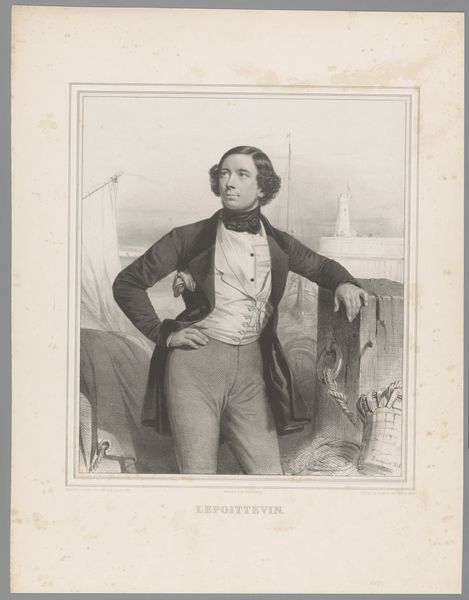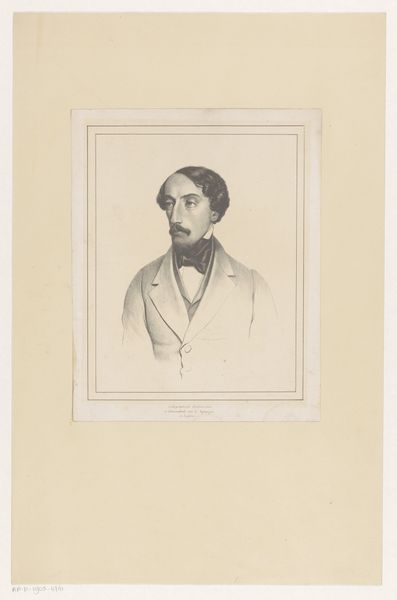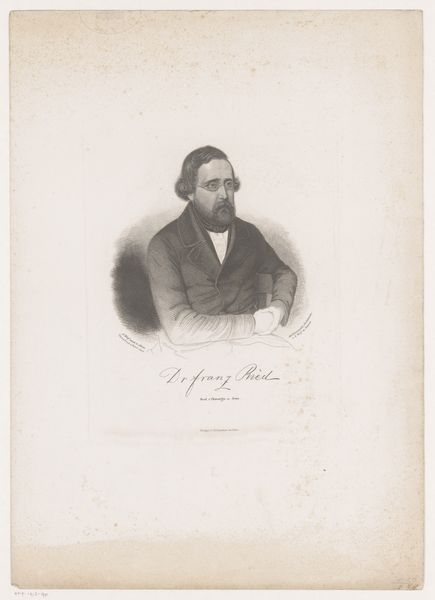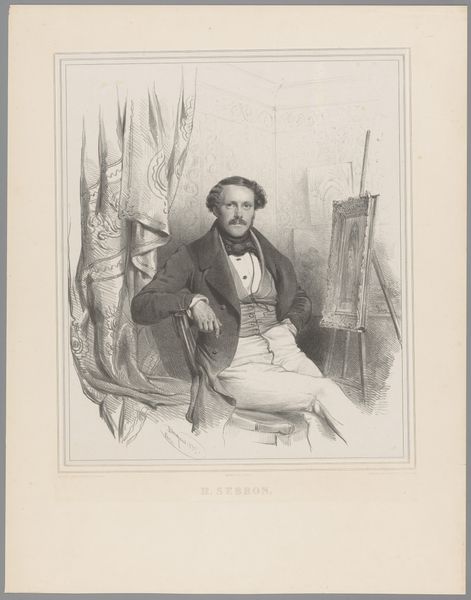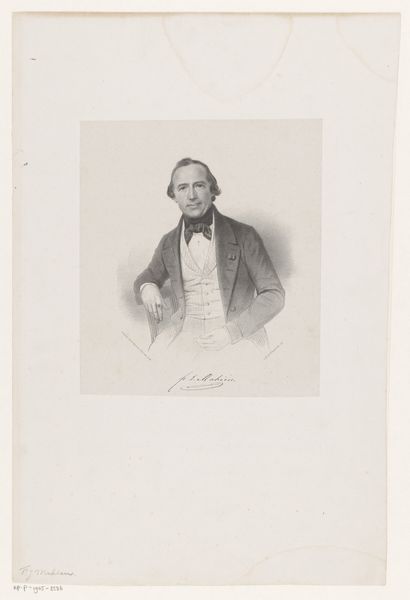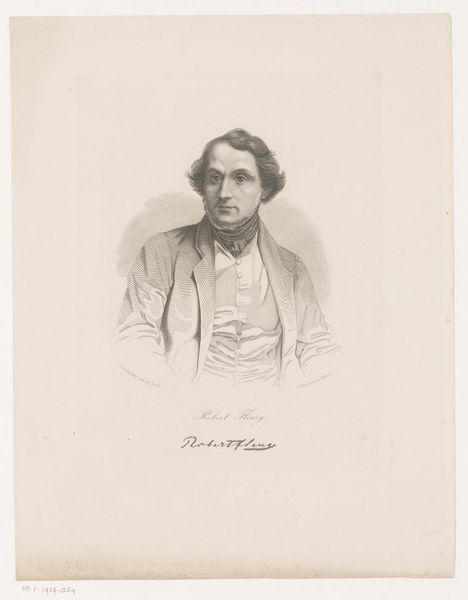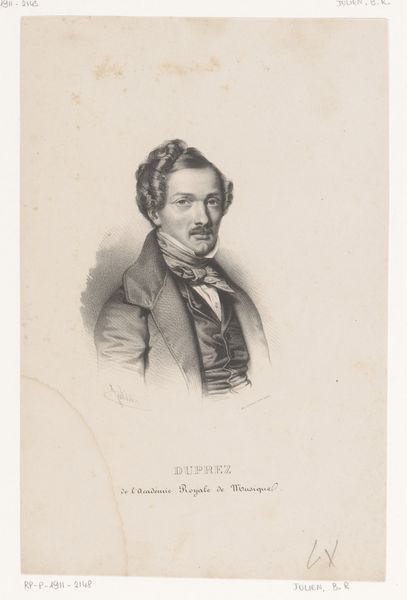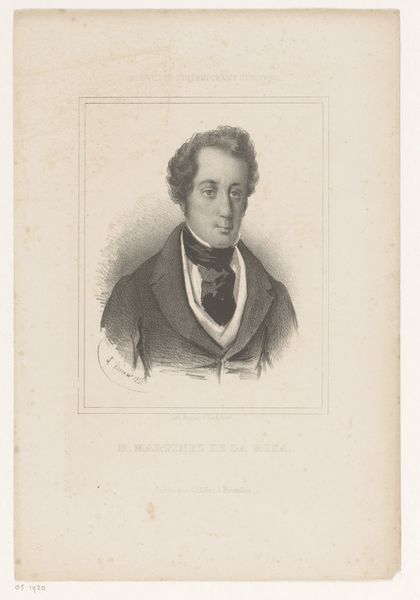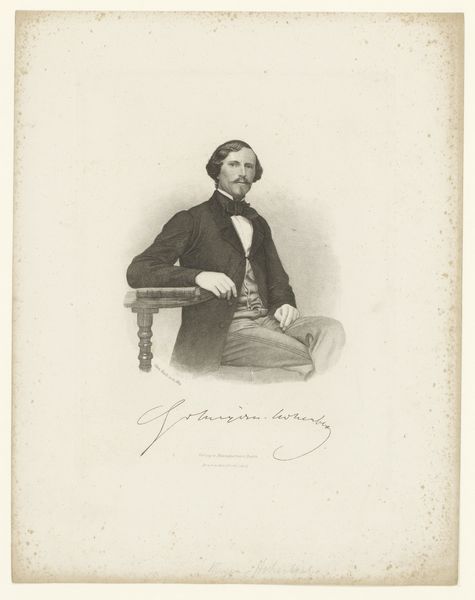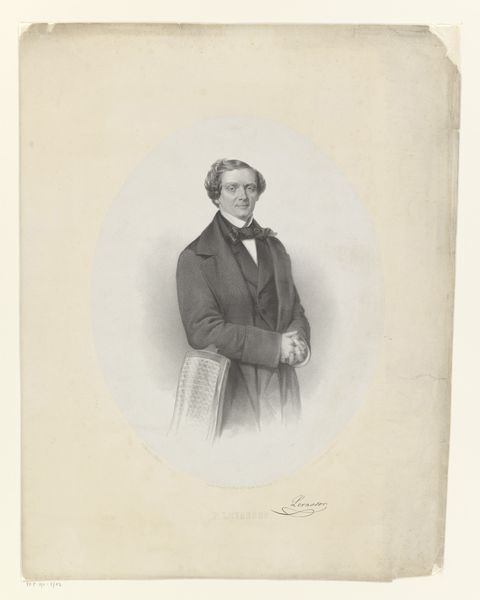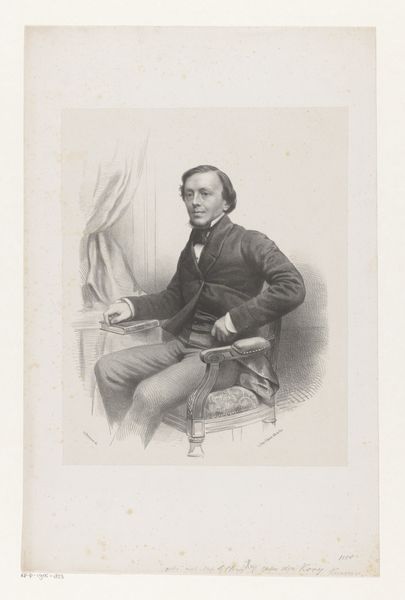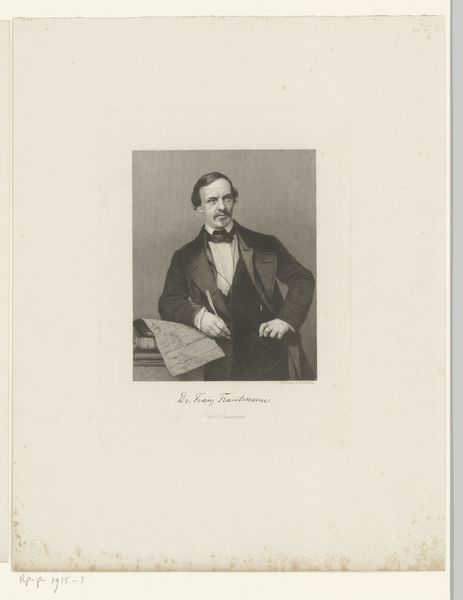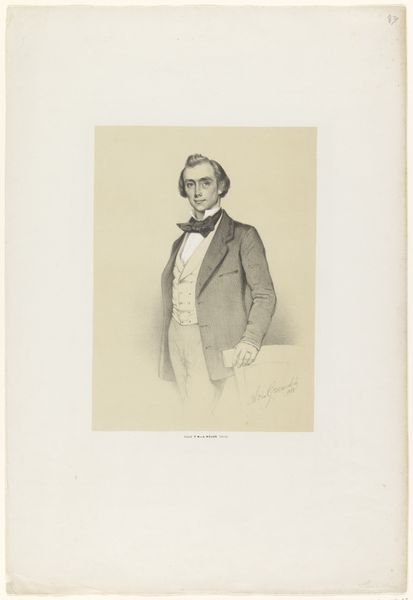
engraving
#
portrait
#
old engraving style
#
romanticism
#
19th century
#
academic-art
#
engraving
#
realism
Dimensions: height 573 mm, width 431 mm
Copyright: Rijks Museum: Open Domain
Editor: So, here we have "Portret van Alexandre-Joseph Artot," an engraving from 1838 by Charles Baugniet, housed here at the Rijksmuseum. It strikes me as a fairly straightforward, if well-executed, portrait of a 19th-century gentleman. What's particularly interesting about this work to you? Curator: I find it intriguing to consider how the act of engraving itself shapes our understanding of Artot's persona and his societal standing. What statements about wealth, social status, and consumption patterns do you think are inherent in this method and finished product? Editor: Well, the very process of engraving, being painstaking and requiring specialized skill, suggests a degree of expense and therefore prestige that might be trying to tell us he’s wealthy or at least has the disposable income. Curator: Precisely! This wasn't mass-produced photography, accessible to many. Engravings like these circulated amongst a certain class, reinforcing social hierarchies through material means. How does the depicted pianoforte – seemingly hand-carved from the image--contribute to this? What can you glean from his carefully tailored coat and stylish posture, relative to how people like us might choose clothing today? Editor: Okay, the piano, if it’s real, it’s another object of craftsmanship and expense; owning one signifies leisure time, artistic cultivation – another way to signal one’s separation from manual labour. And yeah, he’s clearly curating an image, almost selling…aspirations through the portrait medium itself. Curator: Exactly. Consider too the labor involved in producing this print: from the artist's hand meticulously carving the image into a plate, to the printer who produced each impression. All that just to signal status. Is Artot's likeness, rendered through such a specific and exclusive material process, somehow 'truer' or just simply, of its time? Editor: That's a really fascinating perspective; focusing on how the image came into being rather than just what it depicts, it gives me so much more to think about. Curator: Absolutely. By focusing on the materials and their production, we start to grasp the full complexity of 19th-century social dynamics and image-making.
Comments
No comments
Be the first to comment and join the conversation on the ultimate creative platform.
